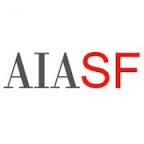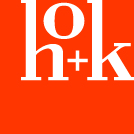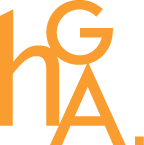Interview w/ hackers Amelie-Phaine Crowe, Beau Frail, Don Weinreich, Kavitha Mathew, Kelsey Oesmann, and Lara Garnant
EQUATOR: an imaginary line drawn around the earth equally distant from both poles, dividing the earth into northern and southern hemispheres and constituting the parallel of latitude 0°. Origin: late Middle English: from medieval Latin aequator, in the phrase circulus aequator diei et noctis ‘circle equalizing day and night,’ from Latin aequare ‘make equal’.
Team Equator: an energized group of change agents comprised of a diverse range of backgrounds, levels of experience, and abilities that share common concerns about equity within the profession.
Working together, the team candidly reflected on the shared disappointment about two truths:
- Inequitable practices are often ingrained in architectural firm culture
- Each firm is different - there is no “one-size-fits-all” approach to building equitable work environments. So, Team Equator set out to create a toolkit that would guide firms in assessing areas where improvement is necessary, then offer implementation strategies to develop equitable practices and policies within firms.
THE EQUATOR as Tool - a unique, tailored “diagnosis” and set of recommendations for improving equity and diversity within firms;
THE EQUATOR as Process - synthesis and analysis of small and big data, from employee and employer perspectives to identify disconnects; facilitation/mediation of group discussions; presentation of potential solutions and mediation as necessary;
THE EQUATOR as Outcomes - a collection of aggregate data on firms of various sizes; development of scalable solutions and training that can be deployed online; implementation of firm policies for achieving equity and diversity goals; proof (data driven results, best practices and a network of firms); an iterative, feedback loop for continuous improvement.
The hypothesis of Team Equator’s hack is that this toolkit will translate to improvements as evidenced in:
- Ability for firms to increase awareness of and break poor habits
- Streamlined process of finding solutions
- Stronger employee-employer relationships
- Scalable solutions that are personalized and adaptable, therefore optimized for effectiveness
- Flexibility and willingness to establish employee-centered firm policies
Ice Breaker - The Egg Project
What did you learn from your group in the course of doing this exercise?
Kavitha - Despite our various levels of experience, I think that we had some common concerns about equity within the profession.
Beau - Our group of six Hackers discovered the elements that connected us, such as our love for drawing and having no pets, and also celebrated the unique qualities that made us a diverse collection of change agents ready to embrace our differences while finding common ground to explore ideas for making our profession more equitable. (the genesis of The Equator)
Kelsey - Our group represented a really diverse range of backgrounds, experiences, and abilities, which added a lot of value to our conversations.
What was the most unexpected response to the what was Unique about each person? (Outside the Egg)
Amelie - I was surprised that no one else played instruments!
Lara - I concluded from the exercise, that many of our commonalities and differences both (personally and professionally) seemed to speak to mutual creativity, passion, patience, empathy, dedication, and analytical thinking. It was interesting to see how even our differences had common threads.
What was the most unexpected response to the what was common to the group? (Inside the Egg)
Kelsey - I was surprised none of us have pets - indication of a need for better work-life balance, perhaps?
Lara - Another interesting coincidence, for me, was that we had all lived on a coast at some point in our lives. We share that common passion and drive.
Beau - Apparently we are not a group of marathon runners, but we are willing to run toward the goals of creating an equitable future.
Defining the Problem
What did you think of the ideation process for defining the problem?
Kavitha - It was a little frenetic, but ultimately productive.
Beau - I agree, the process of narrowing down to a specific problem to address seemed rushed for our group. I appreciated that Kavitha and others came with strong ideas they had previously contemplated. We became a testing ground for these ideas and shared our varied perspectives that resulted in a well-defined problem. BF
Kelsey - Putting words around such complex challenges and narrowing it down to a cohesive “problem statement” was definitely a challenge. The time limit was helpful for forcing us to speak to the issue instead of around it.
Amelie - Part of our struggle was that a number of different issues we wrote down were inter-connected. It was good to enumerate each one, but very difficult to all agree on which tangential issues to leave behind. Yes, I think our group's passion toward equity and the interconnection of the problems drove us towards brainstorming a large number of issues and multiple potential solutions…
Lara - During that stage, our personal experiences (differences) helped fuel the number of problems, while our common passion for equity had us excited to tackle the problems at hand. The interconnected nature of many of the problems, compounded the choice. I agree. The tough aspect in defining the single problem with a single solution, was letting go of or rather not getting to discuss solutions for problems left on the board. As a group, in the end we chose well and were able to define a single problem with a single solution in time. (Of course there was no wrong choice, only the challenge of a time limitation to define it, solve it and present it.) The process of brainstorming problems, while frustrating due to the time constraint, ultimately reflected our common concerns for equity.
What was the problem that your group agree to solve?
Kavitha - We tried to create a toolkit and process for measuring and improving equity within firms, leading to greater diversity.
Beau - The problems that our team gravitated toward as the highest priority to address included:
The ability for a firm to assess their meeting of equity metrics
Resilience of the profession through recessions and other disruptive events. This included retaining talent and providing growth opportunities for younger employees (via equity metrics)
Aging in the profession/ experience gap (similar issues as above)
Crafting the Solution
What did you think of the ideation process for crafting the solution? Was it difficult to come up with ideas? Was it difficult to narrow down to the final solution?
Beau - The fast paced generation of ideas was exciting and at times frustrating. We had many ideas from different perspectives that were worth exploring. Narrowing down on an idea seemed hasty, though perhaps that is the inherent pace involved in Hackathons.
Kelsey - It was a challenge to keep ideas at a “brainstorm” level - I think we had a tendency to get into the details of a specific solution before we considered all the options to determine what the solution should be.
Amelie - It wasn’t too difficult to come up with supportive strategies for our solution. The trouble was that we had a lot of ideas and not quite enough time to write them all down. It was a pretty fluid process. I think we also had some struggles with figuring out how to communicate the strategies verbally in our pitch, and which to leave out of the talking points.
What was the problem that your group agreed to solve?
Beau - Ultimately, our group resonated strongly around a central solution for measuring the equitable quality of a workplace, providing assessments of firms, and offering implementation strategies to develop equitable practices and policies within firms. This equity and diversity assessment and implementation tool is called The Equator.
Kelsey - The Equator addressed inequitable practices and policies that are often ingrained in firm culture and tradition, and provided a unique, tailored “diagnosis” and set of recommendations. Each firm is different and has different challenges and assets, and we wanted to respect that there is no “one-size-fits-all” approach to building equitable work environments.
Amelie - EQUATOR in its final form struck a good balance of being user-friendly, useful to define success vs improvement areas, and potentially appealing as a branding tool for equitable firms.
Lara - Equator, while a single process, possesses the ability to flex to each employee-employer relationship for both the success of the individuals, the firm, and ultimately the industry. The nature of the process is personalized to the individuals involved.
How did you decided to present your elevator pitch?
Team Equator displayed the issue of top down and bottom up perspectives through a short skit. A firm owner and a young professional both expressed their frustrations with gaps and disconnects in equity. We introduced The Equator as a solution for firms and employees/ potential employees to “meet in the middle” to identify disconnects related to diversity and equity and have access to tools for adopting, integrating or advocating solutions. Our group members took turns presenting each part of The Equator process:
- Equity and Diversity Toolkit for measuring and improving equity within firms
- Data Collection and analysis within categories from employee and employer perspectives (online platform/ quiz/ interviews). LARGER GOAL: to aggregate data on multiple scaled firms.
- Identify disconnects, then present solutions and mediate as necessary. LARGER GOAL: identify and develop scalable solutions that can be deployed online
- Develop firm policies and implementation strategies for achieving equity and diversity goals
- Measure and verify the impact of implementation strategies/ tools
- Case studies
- Adoption toolkits and training
- Data driven results verified
- Firm profiles highlighting best practices (opportunity for a Firm Equity Network…)
- Adjust tools as necessary based on data/ results
While aggregating data, developing scaled solutions, and creating supportive firm networks are potential outcomes that can become supportive tools for others undergoing the process, the ultimate success of Equator is it’s core focus on:
- Individual employee-employer relationships
- Solutions that fit those individuals
- Flexibility
- No one solution fits all or fits similar sized firms - (only very similar people with very similar values, goals, relationships, firm culture, etc. may have a similar set of policies - but the success depends on the ability to cater the solutions to meet both the needs of the specific employee and employer for each identified disconnect.) The aggregate data, scaled solutions, and network are resources to support and provide solutions for each disconnect in the employee-employer relationship. Best practices can be developed for each identified disconnect as a resource for potential solutions, but ultimately the selection of the best fit for that particular relationship is key.
- We created this process to be iterative and be able to grow and change as the individual's needs, situations, values, and perspectives change as they progress through their careers.
Lessons Learned
What was the biggest take-away from EQxDHack17?
Beau - These ideas are worth exploring and their potential impact on our profession is an untapped resource for augmenting equity and diversity in architecture. The energy and unique perspectives generated by our group could have continued and further refined our idea.
Kelsey - Also that these ideas and solutions are feasible, relevant, and actionable. What’re we waiting for?!
Lara - My biggest take away, is a new found perspective on our ability to affect change despite the size of the obstacles, the lack of processes to facilitate that change, and also the advice of not letting the fear of failure to become one of those obstacles. It is far too easy to get sucked into our day-to-day activities, and lose ourselves along the way (or speaking for myself anyway). I have been struggling with where to begin - to positively affect society and fulfill my core values in this one lifetime. Too often, our profession is structured to service the wealthy fraction of society. Also, too often the firm structure is created without having the employees influence firm policy, which leads to a dissatisfied sector of employees and retention problems. I always had the drive to make people's lives better with social, environmental, equity issues being at my core. The challenge for me has been the 1) where to begin and 2) how to affect the change I hope for humanity 3) finding those like-minded individuals. I am sincerely grateful for this platform to begin to engage towards equity goals.
Kavitha - What was the most stimulating aspect of the workshop? Definitely watching the other teams pitch their ideas while getting ready to present ours.
Kelsey - Agreed - watching the other pitches was really exciting. It’s amazing what can happen when you get a bunch of creative, passionate people in a room together.
What was the most challenging aspect of the workshop?
Kavitha - The most challenging aspect was the time constraint on each exercise- helped keep the adrenaline levels high!
Beau - Yes, we need more time! How about a followup session the next day where we continue to develop our ideas? How about we record our pitches and post them to social media to share these ideas?
Lara - Definitely time...the open ended nature of solving any problem is wonderful for the formation of the group and the ability to solve a problem the group is passionate about...I don't know if it would be possible to shorten the timeframe for the egg project? Send the equity survey, intro, and structure of hackathon in an email to attendees ahead of conference to shorten the intro at the hackathon? LG
Kelsey - Definitely the time - although I think it was sufficient to get the ideas across.
What would you suggest for people curious about attending a future EQxDHack?
Beau - If you have a desire to make a difference and change our profession for the better, the EQxDHack is the place for you! You will meet leaders from all over the nation and work with them to creatively generate ideas that have the potential to make a lasting impact on our profession. Explore what equity means to you and experience first hand how an afternoon in a stimulating, supportive and slightly competitive setting will drive your best ideas and a spirit of collaboration to address some of the most pressing challenges to our profession related to equity and diversity.
Kelsey - Prepare to be inspired, challenged, and encouraged - maybe even all at once. You’ll learn from new colleagues across the country, hear their stories and share yours, and think both big and small. Working with a diverse group under strict time constraints will push you and your creative problem solving skills far beyond what you thought possible. No challenge is too great for a group of committed, informed and creative collaborators.
EQxDHackathon Blog Series
Access the entire experience of the Equity by Design Hackathon here:
- #EQxDHack17 Recap and Blog Series
- Team S.P.A.R.C. - Swipe Right on Your Career (#EQxDHack17 Winners)
- Team "My Block" Explores Architects' Accountability to our Communities
- Team "Equator" - Toolkit for Assessing and Improving Equitable Practice
- Team "Our Town" - How do we increase public access to Architecture?











